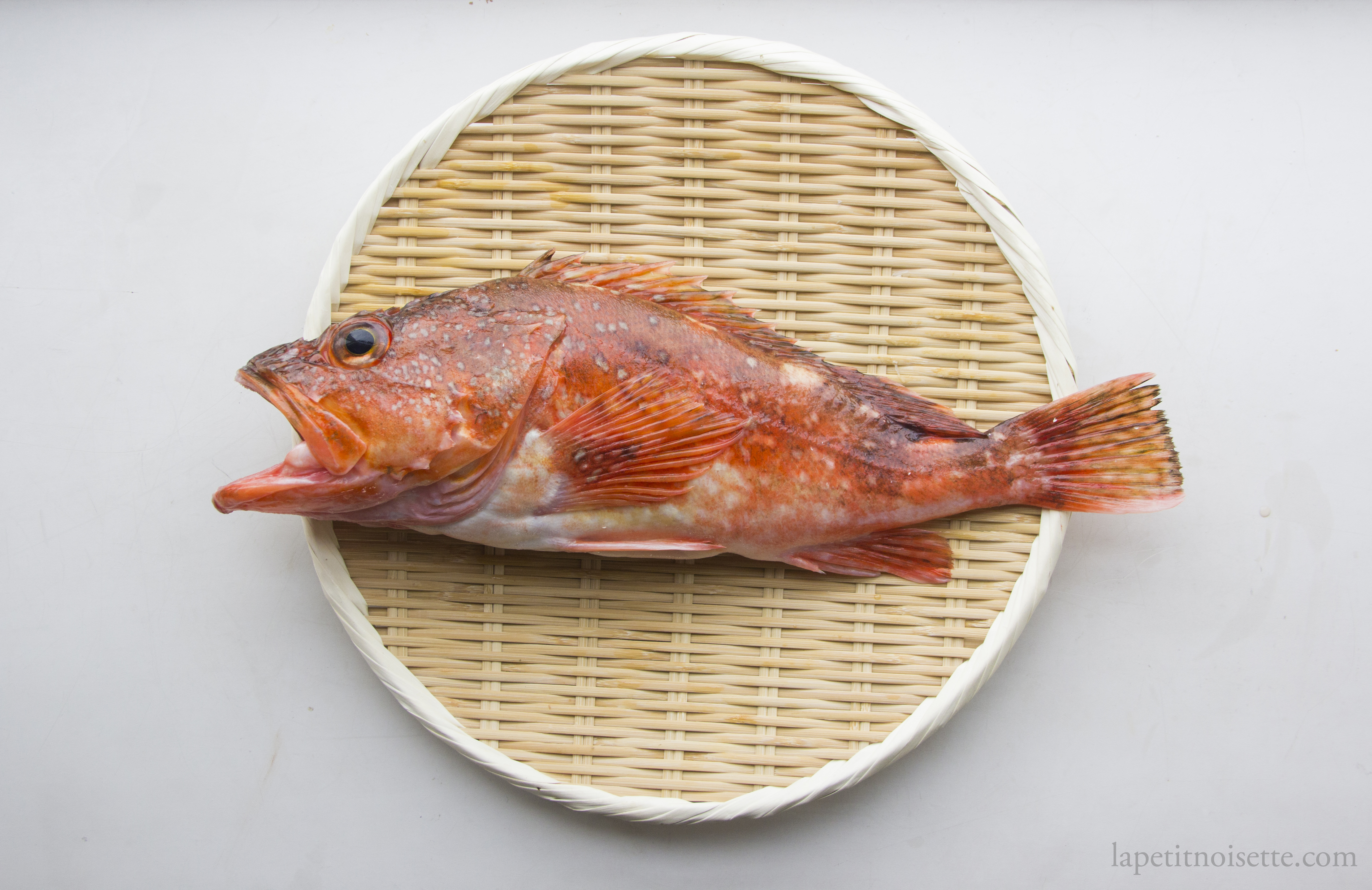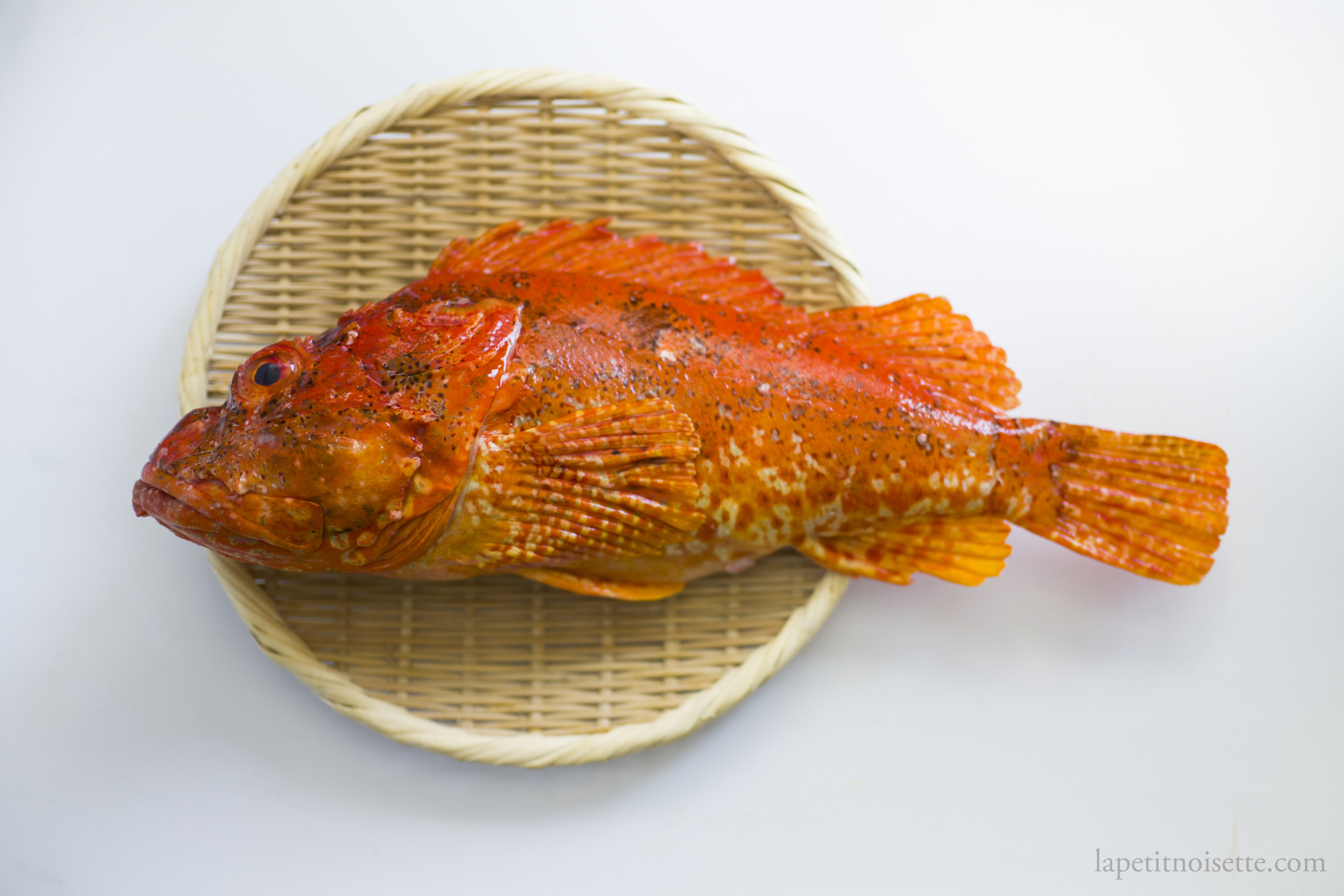I’ve always been interested in differences between the species name of fishes compared to the common market names of fishes, especially how many countries around the world have the same fish but call them by different names but particularly how some countries call different fish the another name in order to fetch a more premium price for their fish.
Having travel around the world a bit, the two countries that most blatantly do this are Australia and New Zealand, who tend to label any fish in the trevally group (Carangidae family) as Shima Aji, their local stargazers as monkfish, any filefish or leatherjacket as Kawahagi, their Australasian snapper (Chrysophrys auratus) as Tai and any fish in the Scorpaena genus as Kasago.
Having done an article on Kinmedai vs Nanyo-kinmedai, today I want to cover the difference between Kasago, the false kelpfish/marbled rockfish (カサゴ/Sebastiscus marmoratus) and Onikasago, the demon scorpionfish (オニカサゴ/Scorpaena neglecta).

What is Kasago (カサゴ/Sebastiscus marmoratus)?
Kasago, or the marbled rockfish, is a much more locally eaten common fish that you’d seldom see at any high-end restaurant. In fact, it’s a fish that’s more commonly targeted by fishing enthusiasts, so you sometimes don’t really see it at fishmongers. If you do see one, it doesn’t fetch a very high price compared to other fish like kinmedai or hirame and has a relatively low yield due it it’s large bony head.
As with any fish in Japan, it is eaten as nigiri or sashimi but in my opinion is a value for money fish as it’s more suitable for use in soup dishes such as miso soup or in a donabe stew. This is because it’s large fins and head make for excellent soup stock, whilst it’s flesh remains fairly firm even well cooked for a longer period of time. You can sometimes see it sold under the name gashira (ガシラ), especially in the Kanto area. The fins on the spine of the kasago are venomous so you’d want to be careful when filleting the fish not to prick yourself on them or cut them off beforehand using a scissors.

What is Onikasago/Izukasago (オニカサゴ/Scorpaena neglecta)?
Straight off the bat here we encounter some nomenclature issues. In Japanese, the name for the genus Scorpaenopsis is Onikasago (オニカサゴ属) but if you look carefully you’ll see the Onikasago we’re talking about is in the Scorpaena genus, called Fusakasago (フサカサゴ属) in Japanese. This is because the market around Kanto for this fish is Onikasago, while the rest of Japan calls it Izukasago (イズカサゴ). This is because this fish is typically confused with another fish (Scorpaenopsis cirrhosa) which is also known as Onikasago. So for this article, we’re referring to Scorpaena neglecta which is known as both Onikasago and Izukasago.
The reason behind this is that Onikasago is the most sought after of all scorpionfish in Japan, and is considered a luxury fish compared to that of Kasago. It’s actually sometimes caught by the same fishermen who try to catch Kasago, and is more seldomly seen in markets. Just like Kasgo, it is also venomous, but has various venomous barbs around it’s body that need to be removed (more information here). It’s actually these venomous fins that allow Onikasago fins to produce fin sake (ひれ酒) second only to pufferfish. Characteristics-wise, it has a richer and nicer flavour compared to Kasago, and is best used for making a wonderful stock for soup and stews. In fact, those of you familiar with French cuisine will know that Marseille’s legendary bouillabaisse soup uses the Red Rascasse scorpionfish (Scorpaena scrofa) as a key ingredient due to the amazing taste it contributes to the base stock. From the name, you can see that both the Red Rascasse and Izukasago are in the Scorpaena genus.
What is the difference between Kasago and Izukasago? (カサゴとイズカサゴの見分け方)
Whilst both fish are in different genus, they are both part of the Scorpaenidae family which is where the mix-up typically occurs. It’s much easier for fishermen all over the world to label any fish from the Scorpaenidae family as Kasago and export it all over the world marketed under a Japanese name, which for some reason fetches a higher price. Of course strictly speaking, only fish in the Sebastiscus genus are called Kasago.
The confusion doesn’t only exist on the international market of course, even within Japan on amartur fishing boats, it can be quite hard to differentiate Kasago, Izukasago and Onikasago. After all, they’re all venomous, they’re all reddish in colour and are all fairly spiky. When you bring something on board that’s thrashing around and wiggling it’s rather hard to identify even if you have the knowledge to do so.
Both fishes are also used for similar applications in soup and stews, but in a side by side comparison, Izukasago yields a much richer and tastier fish stock. The main difference is that Kasago fins do not impart a special taste and mouthfeel when used in fin sake compared to Izukasago. Whilst the fins of Izukasago are one of the most sought after by fin sake enthusiasts given that it’s not only cheaper than pufferfish, but do not require a license to produce.
To recognise the difference between the two, start with your overall impression of the fish. If you compare the pictures on this article, you’d see that Onikasago has a much more rough and rugged appearance, whilst kasago has a more Smooth body surface. Kasago tends also to be a much deeper subdued colour, whilst Onikasago has a much brighter orange colour.
All in all, the filleting technique for the two is basically identical.